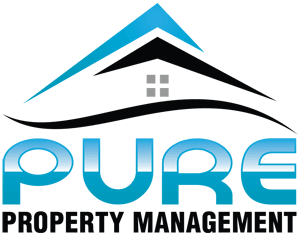As part of our continued approach to ensuring properties under our management are compliant with current legislation, we would like to bring to your attention that due to changes in legislation, all hot & cold water systems are now subject to a Legionella Risk Assessment and, where applicable, control schemes.
Legionella is a bacteria which can cause Legionnaires’ disease, a potentially fatal form of pneumonia and is generally contracted by inhaling tiny droplets of water suspended in the air and that contain the bacteria. Left untreated, this can lead to pneumonia, diarrhea or signs of mental confusion. In a rented property it is the responsibility of the landlord & letting agency; however both the landlord and agent may have equal responsibility and legal obligation. In most residential settings, a simple assessment may show that the risks are low and no further action may be necessary as long as they are being properly managed. However, it is important to review the assessment regularly in case anything changes in the water system.
Why is this applicable to me? I only manage residential property?
These are the two most common questions asked by anyone responsible for residential property be it as a Landlord, Letting Agent or social housing provider. Previously you may not have been responsible for the control and prevention of Legionella Disease or been obligated by any legal requirement but due to changes in legislation, all hot and cold water systems are now subject to a Legionella Risk Assessment and, where applicable, control schemes.
You might find the following information useful in determining any responsibility that you may have as the legal responsibilities are largely being overlooked at present. We have tried to keep it as condense as possible whilst still conveying salient points. Should you still have any questions regards your responsibilities and how to meet them then please do not hesitate to contact our offices.
What is Legionella?
Legionella is a bacteria which can cause Legionnaires’ disease, a potentially fatal form of pneumonia and is generally contracted by inhaling tiny droplets of water (aerosols) suspended in the air and that contain the bacteria. The legionella bacteria can also cause less serious fevers with symptoms similar to flu which include:
- high temperature
- feverishness and chills
- coughing
- muscle pains
- headaches
Left untreated, this can lead to: pneumonia (occasionally), diarrhoea, signs of mental confusion. There are also higher ‘at risk’ groups that would be more susceptible to Legionella Disease and may include those over 45 years of age, current and former smokers, heavy drinkers and people with pre-existing conditions, such as chronic respiratory or kidney disease, diabetes, lung and heart disease and the immunosuppressed. Obviously you may not always know if your tenants fall within any of these categories increasing the importance of meeting your legal requirements.
Who is responsible for prevention/ management of Legionella Risk?
The person in control of the premises is held responsible in relation to managing Legionnaires’ disease. In a rented property it is the responsibility of the landlord or letting agency, depending on the agreement; however both the landlord and agent may have equal responsibility and legal obligation. The responsible party/ parties should ensure:
- A Risk Assessment is carried out.
- A responsible person or persons are appointed.
- The competency and advice of the person conducting the Risk Assessment.
- That employees/ tenants/ visitors to the premises are provided with the necessary information, instruction, training and supervision.
Organisations, or self-employed individuals, who provide residential accommodation or who are responsible for the water system(s) in their premises, are responsible for ensuring that the risk of exposure to legionella in those premises is properly assessed and controlled. All water systems require an assessment of the risk. In most residential settings, a simple assessment may show that the risks are low and no further action may be necessary as long as they are being properly managed. However, it is important to review the assessment regularly in case anything changes in the system. A review should take place in any of the following situations
- There has never been a Risk Assessment carried out previously.
- There is a change to the water system or its use.
- There is a change to the use of the building in which the water system is installed.
- New information about risks or control measures becomes available.
- The results of checks indicate that the control measures are no longer effective.
- There is a change to the personnel/occupants that relates to higher risk groups.
- There has been a case of legionella.
What should be done?
The responsible person(s) should implement precautionary measures and have the ability, experience, instruction, information, training and resources to do so or appoint a suitable contractor to assist. Any Risk Assessment formulated should identify and evaluate potential sources of risk and the particular means of preventing exposure to legionella bacteria or if prevention is not reasonably practicable, the particular means of controlling the risk from exposure to legionella.
Simple control measures can help control the risk of exposure to legionella such as:
- flushing out the system prior to letting the property or regularly (weekly) if it is void for an extended period of time
- avoiding debris getting into the system (e.g. ensure that cold water tanks, where fitted, have a tight-fitting lid)
- setting control parameters (e.g. setting the temperature of the calorifier (hot water cylinder) to ensure water is stored at 60ºC)
- ensure any redundant pipework identified is removed.
Tenants should be advised of any control measures put in place that should be maintained, e.g. not to adjust the temperature setting of the calorifier (hot water cylinder), to regularly clean showerheads and to inform the landlord if the hot water is not heating properly or there are any other problems with the system so that appropriate action can be taken. Where showers are installed, these have the means of creating and dispersing water droplets which may be inhaled causing a foreseeable risk of exposure to legionella. However, if used regularly (as in the majority of most domestic settings) the risks are reduced but in any case, tenants should be advised to regularly clean and disinfect showerheads. Instantaneous electric showers pose less of a risk as they are generally cold water-fed and heat only small volumes of water during operation.
It is important that water is not allowed to stagnate within the water system and so there should be careful management of dwellings that are vacant for extended periods (e.g. student accommodation left empty over the summer vacation). As a general principle, outlets on hot and cold water systems should be used at least once a week to maintain a degree of water flow and minimise the chances of stagnation. To manage the risks during non-occupancy, consideration should be given to implementing a suitable flushing regime or other measures such as draining the system if it is to remain vacant for long periods.
Do I have to keep records?
The Health and Safety Executive Legionnaires’ disease: The control of legionella bacteria in water systems, Approved Code of Practice L8 (Fourth edition) states that: To ensure that precautions continue to be applied and that adequate information is available, you must keep a record of the assessment, the precautionary measures and the treatments. All records should be signed, verified or authenticated by those people performing the various tasks assigned to them. These records should be retained throughout the period they are current and for at least two years afterwards. Retain records of any monitoring inspection, test or check carried out, and the dates, for at least five years.




